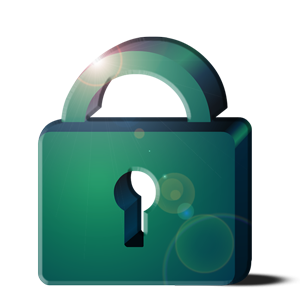 |
Author: Emily Martins Cybersecurity Consultant, JT Enterprise |
As we rely more and more on technology at work and home electronic data has become a significant aspect of our daily lives (especially when it comes to our work) protecting that data becomes increasingly important, too. That's what World Backup Day is here to celebrate: keeping our data safe, secured, and available.
To celebrate this World Backup Day, we're going to be covering some of the best practices you can follow to keep your data safe. If you backup your data, these are the practices you need to be following.
7 backup best practices
1. Back up frequently
![]() You should probably be backing up more frequently than you’d think - did you know that 21% of people have never made a backup? (backblaze.com). If you're not sure how frequently, think about how much work you're willing to lose. Two weeks' worth of work? A day? How about an hour?
You should probably be backing up more frequently than you’d think - did you know that 21% of people have never made a backup? (backblaze.com). If you're not sure how frequently, think about how much work you're willing to lose. Two weeks' worth of work? A day? How about an hour?
The truth is, most of us can't afford to lose more than a few hours of work. That means you should be backing your data up multiple times a day if it's feasible for your business.
You can also increase the frequency of your data backups by fostering better data hygiene with your staff. You may only be able to backup your entire workplace's data set every few days/weeks, but individual employees should have no problem backing up data a few times a day.
2. Use multiple backup methods
![]() Another important best practice for backing up your data is to use multiple backup methods. After all, we all know the dangers of keeping all of your eggs in a single basket.
Another important best practice for backing up your data is to use multiple backup methods. After all, we all know the dangers of keeping all of your eggs in a single basket.
We just covered one way that you can diversify your backups. Have your employees back up their data and conduct workplace-wide backups, too. Other ways to keep your backup methods varied is to use different locations and backup formats, for example remote backup in the cloud and local and offsite physical backups. The goal is to have at least a handful of backups in multiple locations, at multiple frequencies, and in multiple formats so that you're never at risk of losing everything all at once.
It's also important to think about the types of backup that you’ll use, you want to make sure that you can recover and restore your information as quickly as possible. Alternating types of backup, such as incremental daily backups and full weekly and monthly backups, will allow for a faster response when disaster strikes.
3. Encrypt your backups
![]() Next, you should encrypt your backups. Encryption may sound like an intimidating practice, but it's relatively easy to do and adds a lot of security to your data. All it does is scramble your data in a way that only you can unscramble it.
Next, you should encrypt your backups. Encryption may sound like an intimidating practice, but it's relatively easy to do and adds a lot of security to your data. All it does is scramble your data in a way that only you can unscramble it.
This protects your data in the unfortunate case that it becomes the target of a hacker or internal threat. You'll retain some level of control over your data even as it's actively being targeted, helping you retain power in the situation.
The purpose of encryption is to make data security just as core to your approach as backing up your data.
4. Set an appropriate data retention span
![]() Alongside backing up your data regularly, you should be setting an appropriate data retention span. This is how long you plan on keeping your data after it's been backed up. After all, keeping data backed up forever is costly and largely unnecessary.
Alongside backing up your data regularly, you should be setting an appropriate data retention span. This is how long you plan on keeping your data after it's been backed up. After all, keeping data backed up forever is costly and largely unnecessary.
You'll want to consider how long you keep backups, how many backups you keep at any given time, what regulations surrounding data backups in your region are, and so on.
5. Use offsite backup storage
![]() We mentioned the importance of using multiple backup methods. You already know that your data could fall victim to hackers and internal threats. Something you may not have considered, however, is a physical threat. Using a mix of both local and offsite backups can protect your data from physical harm.
We mentioned the importance of using multiple backup methods. You already know that your data could fall victim to hackers and internal threats. Something you may not have considered, however, is a physical threat. Using a mix of both local and offsite backups can protect your data from physical harm.
This could be a fire, electrical surge, faulty equipment, or something as simple as an employee spilling their coffee on a storage device. Having your data backed up to separate physical locations will prevent these sorts of mishaps from wreaking permanent damage to your data.
6. Take advantage of remote backups
![]() Another useful best practice you can take advantage of is remote backups. Remote backups are conducted over the cloud rather than through a physical/wired connection.
Another useful best practice you can take advantage of is remote backups. Remote backups are conducted over the cloud rather than through a physical/wired connection.
Remote backups have become more popular as the cloud has made them easier to implement. And while they shouldn't be your only method of backing data up, they're a major convenience for your business. You can even partner with a backup provider who offers remote backups as a service.
7. Use a professional backup tool
And that brings us to the last best practice, which is using a professional backup tool to keep your data protected. Third-party tools will help keep your data safe with features and implementations that would be difficult to create otherwise.
JT offers just such a solution in the form of JT Cloud Backup. This service is compatible with most enterprise environments and enables your business to keep its data secured over the cloud.
Check that your data is secure this World Backup Day
Our FREE no obligation Cyber Assessment will assist you with creating a backup strategy to keep your business safe.

Book your FREE Cybersecurity Assessment
Cyber threats are continually evolving, and its imperative that your business is protected to prevent the latest information security threats, vulnerabilities and risks.
Reliable security can only be built on a combination of well-trained people, sound governance, accurate reporting and delivered by correctly configured technology.
Our FREE no obligation Cyber Assessment will examine each of these areas, producing a comprehensive study for your whole business.

